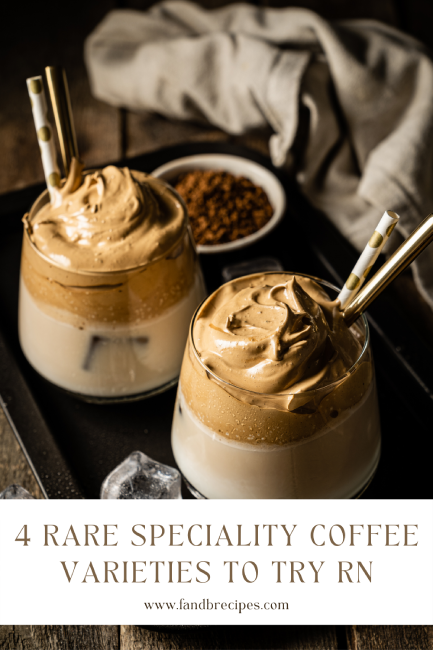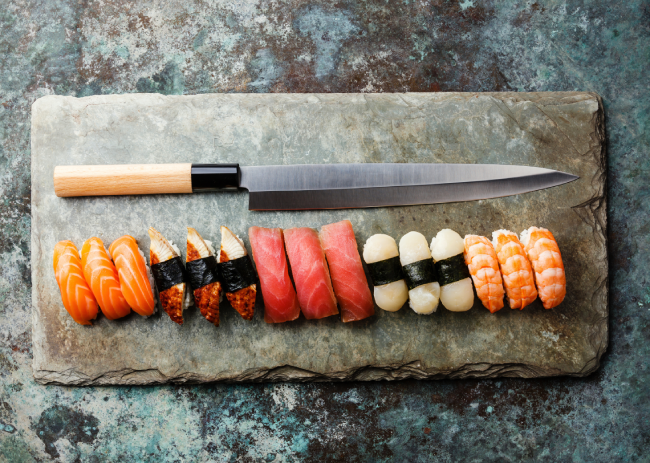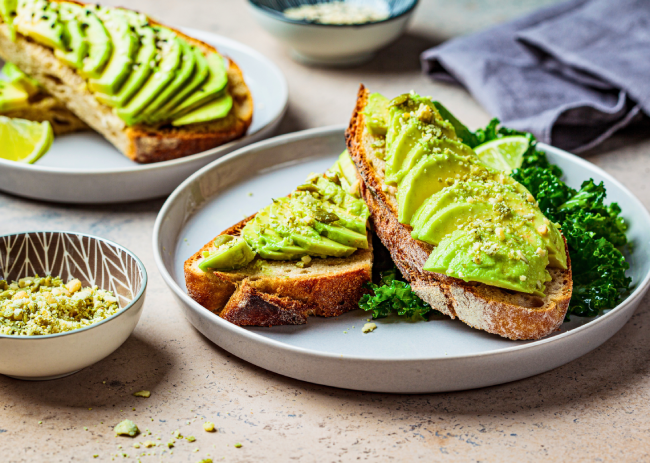4 Rare Speciality Coffee Varieties To Try RN
Holding your breath, you keep the gooseneck kettle aloft and pour just enough hot water over the freshly ground microlot Geisha coffee or your carbonic natural Colombia in your pour-over drip. When the bloom passes, you gingerly pulse-pour the remaining water over your coffee grounds.
The floral and purple fruit aromas waft up to your nose, heightening your anticipation. But you fight the urge to rush and continue your evenly spaced pulsing until, finally, you have one cup of drip coffee perfection. With a deep, contented sigh, you slowly sip your coffee and critique your pour-over technique. You can’t wait to do it all again.
If this sounds like you in the morning, there’s no doubt you love your coffee and the art of making it. Ready to upgrade your coffee knowledge? Read on to learn about a few of the coffee varieties that coffee aficionados like you love.
#1. Geisha
You’ve likely heard about Geisha coffee. It is, after all, the world’s most well-known coffee variety. Geisha coffee from Panama, in particular, is one of the most in-demand and thus most expensive coffees.
But Geisha, an Arabica variety, is not originally from Panama. The famous Panama Geisha was transplanted from Ethiopia, near the small town of Gesha, in the mid-20th century. It grew in the wild in the rainforest, sheltered by the canopy of huge forest trees.
Incidentally, Gesha is the name of this coffee variety, but it’s called Geisha in Panama. You may use Geisha and Gesha interchangeably, however, since they refer to the same coffee variety.
Geisha was brought to Panama because of its resistance to leaf rust. And there, it was cultivated in Boquete’s Hacienda la Esmeralda. But it wasn’t until 2004 when it was entered into a coffee auction, that it made its debut into the limelight.
The judges cupped it and marvelled at its intensely floral and fruity notes. They couldn’t and wouldn’t stop talking about it, catapulting it into worldwide fame. And its scarcity made it even more desirable to fans who couldn’t have enough of the varietal coffee.
Today, Geisha remains one of the most sought-after varieties in the world. It is no longer just cultivated in Panama but has found its way to many other coffee-growing nations. Roasters from various parts of the world also source green coffee beans from Panama. But Geisha coffee is one of the priciest, if not the most expensive, coffee varietal around.
Flavour Profile and Aromatics
Floral, fruity, complex and vibrant are Geisha’s trademark characteristics. Of course, some Geishas are better than others, but as long as a Geisha comes from a superior, high-altitude lot and its beans are carefully prepared, roasted and processed, it is sure to be a cupping standout.
The fruit flavours and floral notes that come through vary mainly by origin. Some Geishas exhibit dark, purple fruit and chocolate flavours, while some others present tropical fruit flavours. Geishas have a remarkable sweetness and silky mouthfeel.
#2. Sidra
Sidra is a man-made coffee cultivar, a result of crossing Red Bourbon with Typica, originally from Pichincha in Ecuador. Nestle’s goal in crossing these varieties was to come up with a superior cup profile. And the resulting Sidra varietal coffee does not disappoint.
However, it requires special care. While it is a sturdy variety with excellent resistance to leaf rust, the force of rain can easily detach the cherries from the plant.
Flavour Profile and Aromatics
Sidra captures the body and heavy sweetness of Red Bourbon and the floral notes and bright acidity of the Typica. It has an exceptionally unique profile.
Some Sidra from Ecuador presents with uncommon ginger and lime zest aromatics from the moment you grind the beans with the coffee exhibiting citrusy flavours in the cup. There are also Ecuadorian Sidras that are exceptionally floral, displaying notes of lavender, lychee, and hops with a hint of honey and dried fruits. It’s an incredible experience, sipping on coffee that tastes like beer.
#3. Tabi
Tabi is another man-made coffee cultivar, a cross among three varieties: Timor Hybrid, Typica and Bourbon. This particular coffee cultivar was introduced to the world by CENICAFE, Colombia’s Coffee Research Institute, in 2002. It is one of the results of the research institute’s ongoing efforts to produce leaf rust-resistant cultivars that will produce exceptional varietal coffee.
This coffee variety is not a very demanding plant to grow. It can survive even in relatively dense lots and can withstand high altitudes, as well. It produces red and yellow cherries.
Tabi is a word from the Guambiano language that translates to “good,” and good coffee it is.
Flavour Profile and Aromatics
Tabi combines the desirable characteristics of Bourbon and Typica. The bright fruit acidity of the Typica most notably comes through.
On the nose, Tabi coffee comes off as round and fruity. In the cup, Tabi coffee can taste of dried fruits, red and deep purple fruits (think blackberry), chocolate and caramel, and nuts like almond and hazelnut.
#4. Pink Bourbon
In Colombia, there is a type of coffee plant that bears pink and orange cherries. It is called the Pink Bourbon. It is a hybrid of the Yellow Bourbon and Red Bourbon varieties, and it is a recessive gene that leads to the expression of these unusual colours.
The Pink Bourbon originates from the farm of Gabriel Castaño Buendia in San Adolfo, Acevedo in Huila, Colombia. Mr. Buendia discovered the rare trees on his farm and helped propagate the variety by giving seeds to other coffee producers in the area.
According to experts, it is likely that there are many strains of the Pink Bourbon, and some have genes from other varieties such as Catimor, Caturra and others. This means that Pink Bourbon can have widely varying presentations in the cup.
Flavour Profile and Aromatics
With a superior Pink Bourbon strain coffee, you can expect a highly complex mouthful of flavours. The coffee can have floral notes of lavender. There can also be a hint of jammy sweetness and deep purple and red fruits notes in the cup.
Speciality Coffee Worth Trying
There are many varieties of coffee. But true coffee aficionados know the value of certain varieties such as Geisha (or Gesha), Sidra, Tabi, and Pink Bourbon.
But the flavours of your coffee do not depend only on variety. The way coffee plants are planted, grown and cared for matters a lot. Then there’s the harvesting and processing that the coffee cherries go through afterwards. This is the single-origin speciality coffee raison d’etre. With single-origin coffee, a coffee drinker knows exactly who “made” his coffee.




